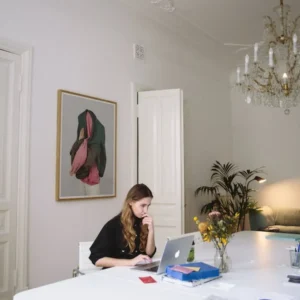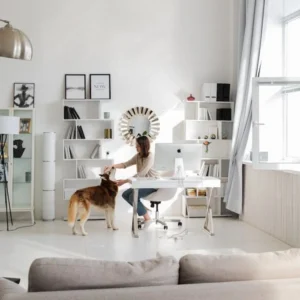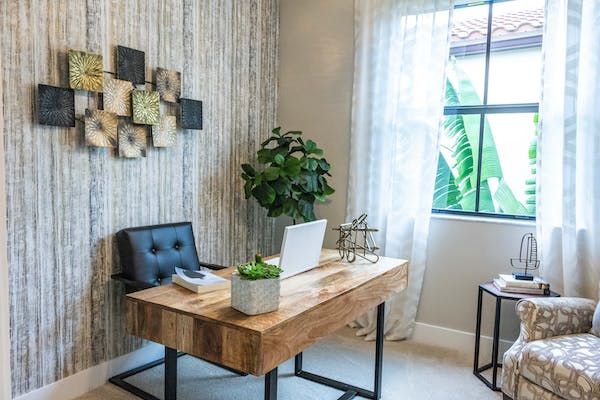If you are thinking about using a room in your house as a cosy, yet functional office, you’ve probably already envisaged the challenges waiting for you. Converting a room into a small home office is not the most difficult task, but it is specific in many ways. Home offices are becoming increasingly popular due to flexible working practices and if working from home is an option for you, you really need to make your home office as practical and convenient as possible. After all, you’ll be spending many hours in it and you need to be productive. So, what is it that you can do to make your home office both functional and aesthetically pleasing?
 Find the right space
Find the right space
Home offices don’t need to be very large in most cases, but they do have to meet certain criteria regarding the size, ventilation and amount of daylight. First of all, you have to decide whether you’re going to turn a separate room into your home office (if there is a spare room in the house) or use a larger room (such as the living room or bedroom) and use an area within that room as your office.
Choosing the desk
Desk is the most important part of your home office and if you have a separate room, you have to find one that is big enough, but which doesn’t necessarily have to complement the style of other rooms. On the other hand, if you have to install your home office in one of the rooms, you have to be careful and find a desk which is unobtrusive and which will match your room and existing furniture.
Use the walls
No matter where your home office is, installing shelves on the walls is a must. Using vertical space will save you a lot of floor space, which means you’ll be able to walk around more freely and you’ll avoid tripping over piles of things that you have nowhere else to put. We suggest open shelves, since they make the space more open and you can even put some flowers on them. Alternatively, you could opt for a storage wall unit and keep office supplies in pretty storage boxes.
 Thinking outside the box
Thinking outside the box
You may realise that your office can’t be a self-contained space, but that’s no reason to panic. Instead, be creative and explore other options, such as under stairs, large landings, hallways or dining rooms. You’re bound to found a space for your home office. Just use paint, flooring or rugs, to zone the different elements of the space. That should give the space a more intentional feel.
Alcoves
One of the typically underused spaces are alcoves, which are usually too small for a wardrobe, TV stand or some other item of furniture, but can be just the right size for you to squeeze in a desk. The walls could provide support to your work surface and you can use the space above for shelves.
Hideaway options
Most people don’t like their home office to be visible and that is quite normal. Being exposed while working can be detrimental to your productivity, since every little distraction would affect your work. So, if possible, try to find a space behind closed doors or at least some kind of partition. Also, don’t forget that your home office will be cluttered at times and you don’t want everyone who comes to your house to see that. Finally, such a solution is great for those who only occasionally need to work from home.
Glass desks
No matter how you feel about glass desks, there is no denying they can be both very practical and stylish. To begin with, they are easy to clean, even if you decide to apply spray paint on it in order to personalise the space. Some people like to use coloured or patterned contact paper on them, but you really don’t have to if you don’t like it. A glass desk in unobtrusive and it seemingly disappears when not in use and will not make the room look cramped, which makes is a very good option for small home offices.
As you can see, creating a small office is challenging, but if you embrace the challenge in the right way and make sure the space is both stylish and functional, you’ll be able to enjoy all the benefits of working from home.





